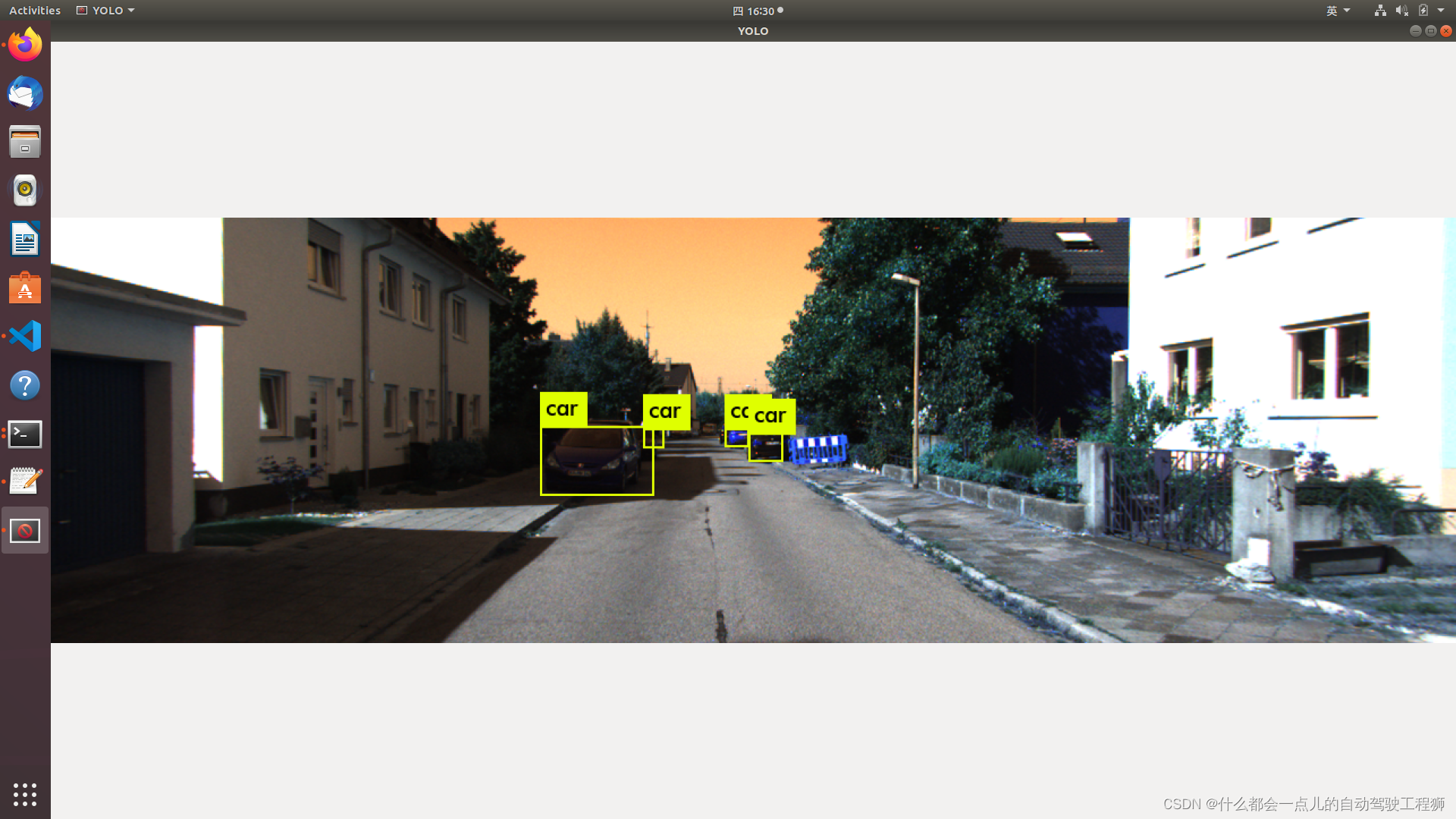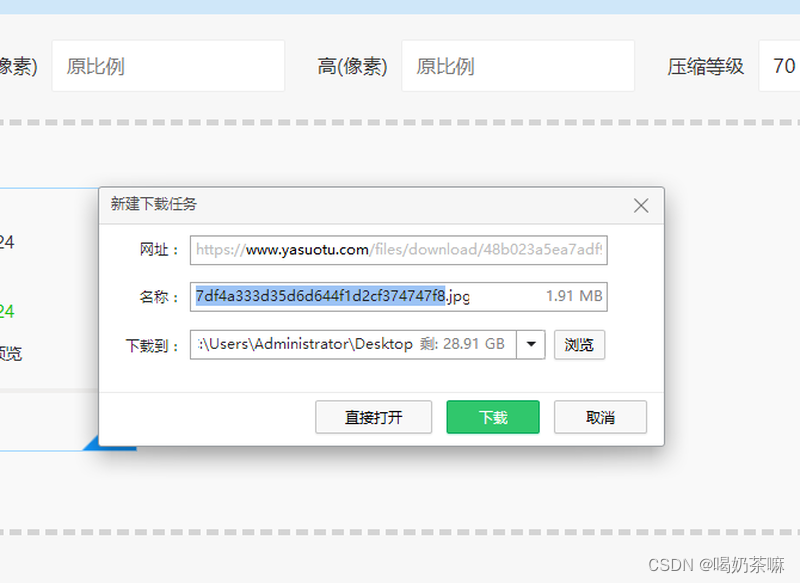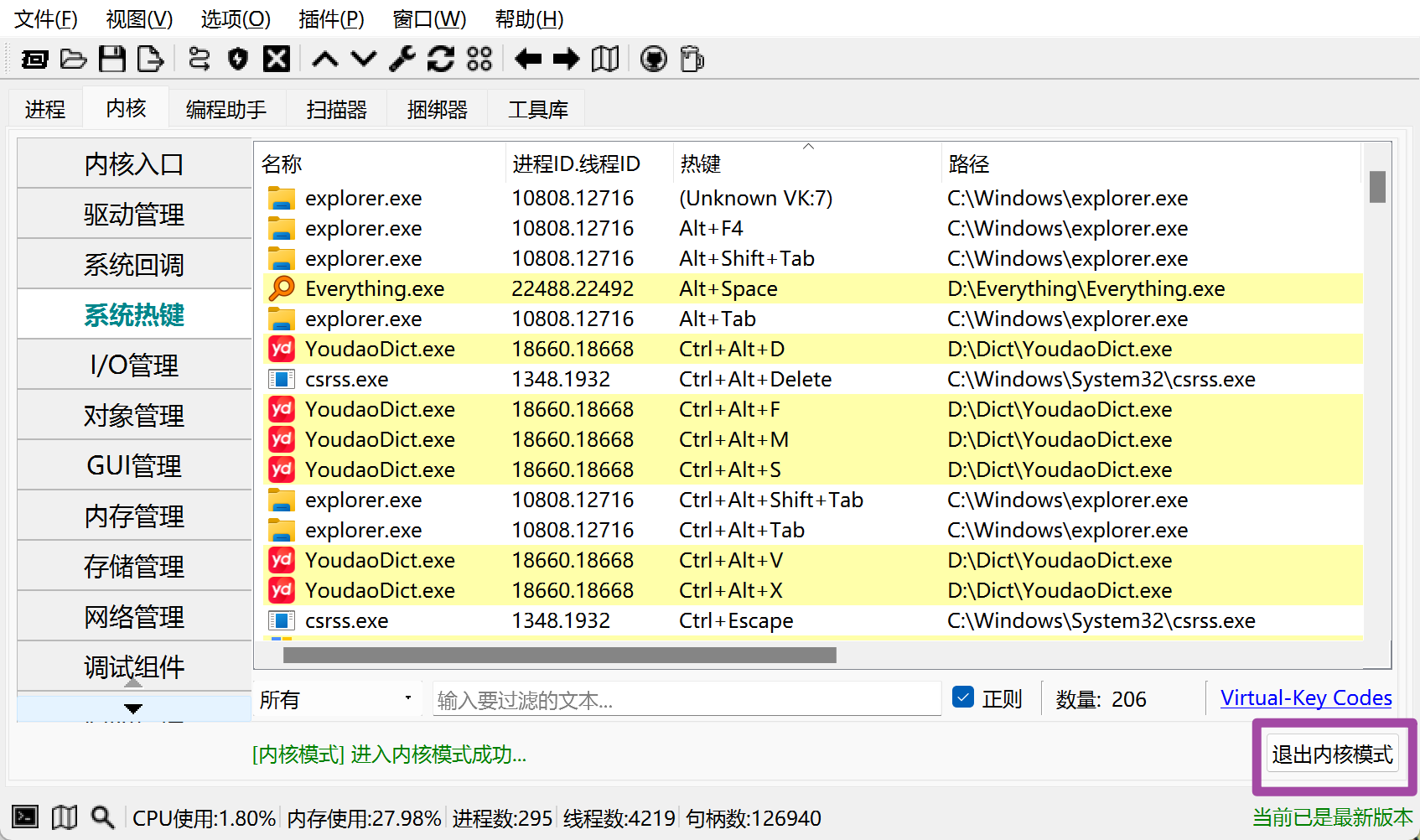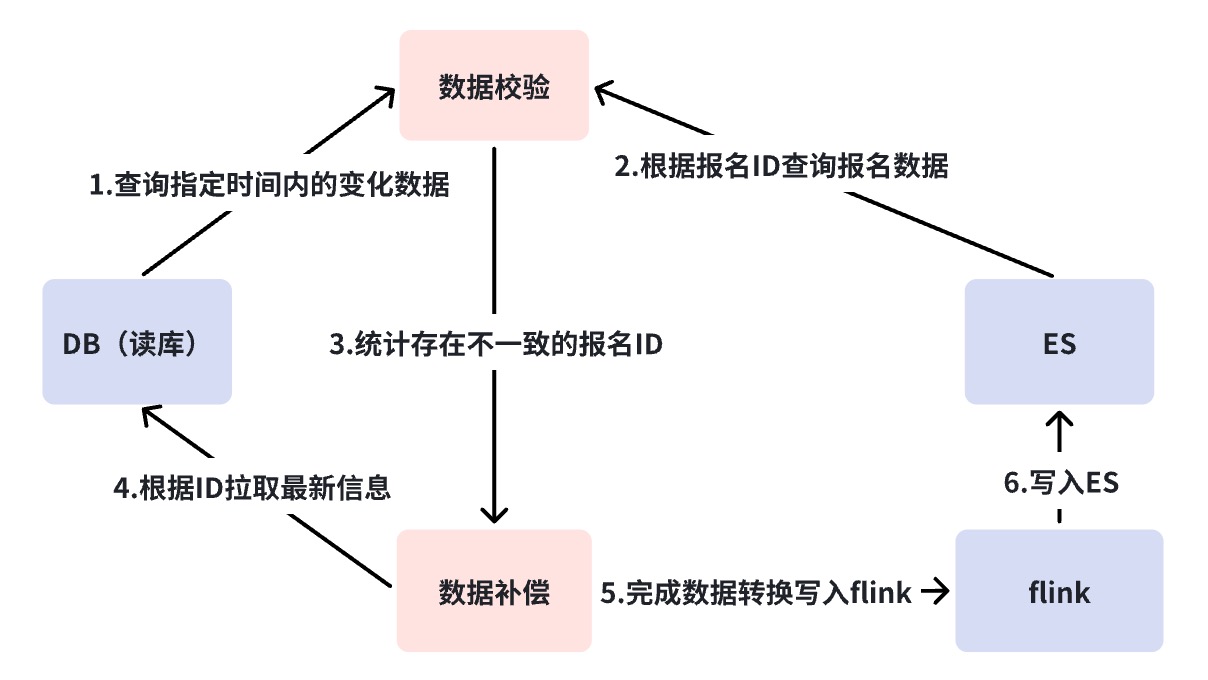前言
接着前文分析Android T 远程动画显示流程其二
我们通过IRemoteAnimationRunner跨进程通信从系统进程来到了桌面进程,这里是真正动画播放的逻辑。
之后又通过IRemoteAnimationFinishedCallback跨进程通信回到系统进程,处理动画结束时的逻辑。
进入桌面进程启动动画
跨进程通信,实现IRemoteAnimationRunner
代码路径:frameworks/base/packages/SystemUI/shared/src/com/android/systemui/shared/system/RemoteAnimationRunnerCompat.java
public abstract class RemoteAnimationRunnerCompat extends IRemoteAnimationRunner.Stub {public abstract void onAnimationStart(@WindowManager.TransitionOldType int transit,RemoteAnimationTarget[] apps, RemoteAnimationTarget[] wallpapers,RemoteAnimationTarget[] nonApps, Runnable finishedCallback);@Overridepublic final void onAnimationStart(@TransitionOldType int transit,RemoteAnimationTarget[] apps,RemoteAnimationTarget[] wallpapers,RemoteAnimationTarget[] nonApps,final IRemoteAnimationFinishedCallback finishedCallback) {//调用自身抽象方法onAnimationStartonAnimationStart(transit, apps, wallpapers,nonApps, () -> {try {finishedCallback.onAnimationFinished();} catch (RemoteException e) {Log.e("ActivityOptionsCompat", "Failed to call app controlled animation"+ " finished callback", e);}});}......
}
这里传递的参数都是前面RemoteAnimationController.goodToGo方法中获取的值。
transit的值是TRANSIT_OLD_WALLPAPER_CLOSE(12);
app指的是桌面和应用的RemoteAnimationTarget;
wallpapers壁纸的RemoteAnimationTarget;
nonApp非APP类型的RemoteAnimationTarget;
finishedCallback是FinishedCallback对象,这里传递的是调用了其onAnimationFinished()方法。
这方方法调用了自身抽象方法调用自身抽象方法onAnimationStart,onAnimationStart方法真正的实现在LauncherAnimationRunner类中
@TargetApi(Build.VERSION_CODES.P)
public class LauncherAnimationRunner extends RemoteAnimationRunnerCompat {......@BinderThreadpublic void onAnimationStart(int transit,RemoteAnimationTarget[] appTargets,RemoteAnimationTarget[] wallpaperTargets,RemoteAnimationTarget[] nonAppTargets,Runnable runnable) {Runnable r = () -> {//退出动画的流程,此时mAnimationResult为空,尚未进入该流程finishExistingAnimation();//创建AnimationResult,传递了两个runnable//() -> mAnimationResult = null,把AnimationResult对象置空//runnable,就是前面传递的IRemoteAnimationFinishedCallback.onAnimationFinishedmAnimationResult = new AnimationResult(() -> mAnimationResult = null, runnable);//传递从系统侧调用过来的参数创建动画getFactory().onCreateAnimation(transit, appTargets, wallpaperTargets, nonAppTargets,mAnimationResult);};//根据mStartAtFrontOfQueue的值,执行线程 rif (mStartAtFrontOfQueue) {//将Runnable插入到消息队列的前面,以确保它尽快被执行postAtFrontOfQueueAsynchronously(mHandler, r);} else {//将Runnable异步地插入到消息队列中,它将在队列中的其他消息之后执行。postAsyncCallback(mHandler, r);}}......
}
-
退出动画的流程
finishExistingAnimation();@UiThreadprivate void finishExistingAnimation() {if (mAnimationResult != null) {mAnimationResult.finish();mAnimationResult = null;}}根据mAnimationResult是否为空执行finish方法,主要就是执行
mASyncFinishRunnable,后续会在动画退出流程中细讲finish方法。 -
创建AnimationResult
mAnimationResult = new AnimationResult(() -> mAnimationResult = null, runnable);public static final class AnimationResult {......private AnimationResult(Runnable syncFinishRunnable, Runnable asyncFinishRunnable) {mSyncFinishRunnable = syncFinishRunnable;mASyncFinishRunnable = asyncFinishRunnable;}......}AnimationResult主要用来返回当前动画播放结果,以便后续执行动画播放完成时的回调(mASyncFinishRunnable)。
() -> mAnimationResult = null,一个把AnimationResult对象置空的Runnable,保存到mSyncFinishRunnable中;
runnable,就是前面传递的IRemoteAnimationFinishedCallback.onAnimationFinished,保存到mASyncFinishRunnable中。 -
传递从系统侧创建的参数创建动画
getFactory().onCreateAnimation(transit, appTargets, wallpaperTargets, nonAppTargets,mAnimationResult);传递了从系统侧创建的参数,并传递了
mAnimationResult对象。这里调用的是RemoteAnimationFactory接口中的onCreateAnimation方法。/*** Used with LauncherAnimationRunner as an interface for the runner to call back to the* implementation.*/@FunctionalInterfacepublic interface RemoteAnimationFactory {/*** Called on the UI thread when the animation targets are received. The implementation must* call {@link AnimationResult#setAnimation} with the target animation to be run.*/void onCreateAnimation(int transit,RemoteAnimationTarget[] appTargets,RemoteAnimationTarget[] wallpaperTargets,RemoteAnimationTarget[] nonAppTargets,LauncherAnimationRunner.AnimationResult result);......}在最开始Launcher.startActivitySafely流程中,QuickstepTransitionManager.getActivityLaunchOptions方法中创建了AppLaunchAnimationRunner对象,并作为RemoteAnimationFactory对象传递到了。
mAppLaunchRunner = new AppLaunchAnimationRunner(v, onEndCallback);RemoteAnimationRunnerCompat runner = new LauncherAnimationRunner(mHandler, mAppLaunchRunner, true /* startAtFrontOfQueue */);因此我们这里RemoteAnimationFactory的实现,就是在QuickstepTransitionManager.AppLaunchAnimationRunner中。
传递从系统侧创建的参数创建动画
代码路径:packages/apps/Launcher3/quickstep/src/com/android/launcher3/QuickstepTransitionManager.java
private class AppLaunchAnimationRunner implements RemoteAnimationFactory {private final View mV;private final RunnableList mOnEndCallback;AppLaunchAnimationRunner(View v, RunnableList onEndCallback) {mV = v;mOnEndCallback = onEndCallback;}@Overridepublic void onCreateAnimation(int transit,RemoteAnimationTarget[] appTargets,RemoteAnimationTarget[] wallpaperTargets,RemoteAnimationTarget[] nonAppTargets,LauncherAnimationRunner.AnimationResult result) {//创建AnimatorSetAnimatorSet anim = new AnimatorSet();//判断桌面的是否已经不在前台boolean launcherClosing =launcherIsATargetWithMode(appTargets, MODE_CLOSING);//检查是否从桌面小部件启动应用final boolean launchingFromWidget = mV instanceof LauncherAppWidgetHostView;//检查是否从最近应用列表启动应用final boolean launchingFromRecents = isLaunchingFromRecents(mV, appTargets);//决定是否跳过动画的第一帧final boolean skipFirstFrame;if (launchingFromWidget) {//从桌面小部件启动应用的动画composeWidgetLaunchAnimator(anim, (LauncherAppWidgetHostView) mV, appTargets,wallpaperTargets, nonAppTargets, launcherClosing);addCujInstrumentation(anim, InteractionJankMonitorWrapper.CUJ_APP_LAUNCH_FROM_WIDGET);skipFirstFrame = true;} else if (launchingFromRecents) {//从最近任务启动应用的动画composeRecentsLaunchAnimator(anim, mV, appTargets, wallpaperTargets, nonAppTargets,launcherClosing);addCujInstrumentation(anim, InteractionJankMonitorWrapper.CUJ_APP_LAUNCH_FROM_RECENTS);skipFirstFrame = true;} else {//点击桌面图标启动应用的动画composeIconLaunchAnimator(anim, mV, appTargets, wallpaperTargets, nonAppTargets,launcherClosing);addCujInstrumentation(anim, InteractionJankMonitorWrapper.CUJ_APP_LAUNCH_FROM_ICON);skipFirstFrame = false;}//桌面不在前台给动画添加一个监听器if (launcherClosing) {anim.addListener(mForceInvisibleListener);}//设置动画和回调result.setAnimation(anim, mLauncher, mOnEndCallback::executeAllAndDestroy,skipFirstFrame);}@Overridepublic void onAnimationCancelled() {mOnEndCallback.executeAllAndDestroy();}}
这里我们主要关注点击桌面图标启动应用的动画逻辑
点击桌面图标启动应用的动画
composeIconLaunchAnimator(anim, mV, appTargets, wallpaperTargets, nonAppTargets,launcherClosing);
anim一个AnimatorSet对象;
mV这里指的是启动的应用图标,比如com.android.launcher3.BubbleTextView{bace738 VFED..CL. ........ 582,525-859,945 #7f09016a app:id/icon};
appTargets指的是桌面和应用的RemoteAnimationTarget;
wallpaperTargets壁纸的RemoteAnimationTarget;
nonAppTargets非APP类型的RemoteAnimationTarget;
launcherClosing此时桌面的是否已经不在前台,因此值为true
/*** Compose the animations for a launch from the app icon.** @param anim the animation to add to* @param v the launching view with the icon* @param appTargets the list of opening/closing apps* @param launcherClosing true if launcher is closing*/private void composeIconLaunchAnimator(@NonNull AnimatorSet anim, @NonNull View v,@NonNull RemoteAnimationTarget[] appTargets,@NonNull RemoteAnimationTarget[] wallpaperTargets,@NonNull RemoteAnimationTarget[] nonAppTargets,boolean launcherClosing) {// Set the state animation first so that any state listeners are called// before our internal listeners.//setCurrentAnimation(anim)取消任何正在运行的动画,设置新的动画//即将动画设置为当前状态动画mLauncher.getStateManager().setCurrentAnimation(anim);// Note: the targetBounds are relative to the launcherint startDelay = getSingleFrameMs(mLauncher);//设置动画参数Animator windowAnimator = getOpeningWindowAnimators(v, appTargets, wallpaperTargets, nonAppTargets, launcherClosing);//设置动画启动延时windowAnimator.setStartDelay(startDelay);//设置windowAnimator给AnimatorSet对象anim.play(windowAnimator);//如果桌面已经不在最顶层显示if (launcherClosing) {// Delay animation by a frame to avoid jank.//将动画延迟一帧以避免抖动//创建一个launcherAnimator动画和endListener线程Pair<AnimatorSet, Runnable> launcherContentAnimator =getLauncherContentAnimator(true /* isAppOpening */, startDelay, false);//把launcherAnimator动画放到AnimatorSetanim.play(launcherContentAnimator.first);anim.addListener(new AnimatorListenerAdapter() {@Overridepublic void onAnimationEnd(Animator animation) {//运行endListener线程launcherContentAnimator.second.run();}});}}
之前最为关键的就是getOpeningWindowAnimators方法
Animator windowAnimator = getOpeningWindowAnimators(v, appTargets, wallpaperTargets, nonAppTargets, launcherClosing);
这个方法是动画真正的设置部分
设置动画相关参数、监听等
/*** @return Animator that controls the window of the opening targets from app icons.*/private Animator getOpeningWindowAnimators(View v,RemoteAnimationTarget[] appTargets,RemoteAnimationTarget[] wallpaperTargets,RemoteAnimationTarget[] nonAppTargets,boolean launcherClosing) {//获取应用方向int rotationChange = getRotationChange(appTargets);//获取启动应用的窗口边界Rect windowTargetBounds = getWindowTargetBounds(appTargets, rotationChange);//检查appTargets中所有应用目标是否半透明//areAllTargetsTranslucent方法返回的的是,//mode值为MODE_OPENING(正在打开的应用)的RemoteAnimationTarget的isTranslucent的值boolean appTargetsAreTranslucent = areAllTargetsTranslucent(appTargets);RectF launcherIconBounds = new RectF();//获取一个浮动图标视图FloatingIconView floatingView = FloatingIconView.getFloatingIconView(mLauncher, v,!appTargetsAreTranslucent, launcherIconBounds, true /* isOpening */);Rect crop = new Rect();Matrix matrix = new Matrix();//创建mMode为MODE_OPENING的RemoteAnimationTargets对象//把app、壁纸和非app类型的RemoteAnimationTarget对象保存到RemoteAnimationTargets中RemoteAnimationTargets openingTargets = new RemoteAnimationTargets(appTargets,wallpaperTargets, nonAppTargets, MODE_OPENING);//创建SurfaceTransactionApplier对象SurfaceTransactionApplier surfaceApplier =new SurfaceTransactionApplier(floatingView);//为了确保动画完成时,释放相关资源openingTargets.addReleaseCheck(surfaceApplier);//获取导航栏的RemoteAnimationTarget对象RemoteAnimationTarget navBarTarget = openingTargets.getNavBarRemoteAnimationTarget();//DragLayer是一个ViewGroup,协调处理它的子view拖动的容器//getLocationOnScreen获取DragLayer在屏幕上的绝对位置int[] dragLayerBounds = new int[2];mDragLayer.getLocationOnScreen(dragLayerBounds);//检查是否支持冷启动窗口Splash Screenfinal boolean hasSplashScreen;if (supportsSSplashScreen()) {int taskId = openingTargets.getFirstAppTargetTaskId();Pair<Integer, Integer> defaultParams = Pair.create(STARTING_WINDOW_TYPE_NONE, 0);Pair<Integer, Integer> taskParams =mTaskStartParams.getOrDefault(taskId, defaultParams);mTaskStartParams.remove(taskId);hasSplashScreen = taskParams.first == STARTING_WINDOW_TYPE_SPLASH_SCREEN;} else {hasSplashScreen = false;}//创建AnimOpenProperties对象,设置应用启动时的动画属性AnimOpenProperties prop = new AnimOpenProperties(mLauncher.getResources(), mDeviceProfile,windowTargetBounds, launcherIconBounds, v, dragLayerBounds[0], dragLayerBounds[1],hasSplashScreen, floatingView.isDifferentFromAppIcon());//计算裁剪区域的边界int left = prop.cropCenterXStart - prop.cropWidthStart / 2;int top = prop.cropCenterYStart - prop.cropHeightStart / 2;int right = left + prop.cropWidthStart;int bottom = top + prop.cropHeightStart;// Set the crop here so we can calculate the corner radius below.crop.set(left, top, right, bottom);//创建临时矩形和点对象RectF floatingIconBounds = new RectF();RectF tmpRectF = new RectF();Point tmpPos = new Point();//设置动画的一些参数和监听AnimatorSet animatorSet = new AnimatorSet();ValueAnimator appAnimator = ValueAnimator.ofFloat(0, 1);appAnimator.setDuration(APP_LAUNCH_DURATION);//设置动画的插值器为LINEAR。插值器决定了动画的速度曲线。LINEAR意味着动画将匀速进行appAnimator.setInterpolator(LINEAR);//为appAnimator添加一个动画监听器floatingView。//当动画开始、结束、取消或重复时,floatingView上的相应方法将被调用。appAnimator.addListener(floatingView);appAnimator.addListener(new AnimatorListenerAdapter() {@Override//监听动开始public void onAnimationStart(Animator animation) {//获取LauncherTaskbarUIController的实例LauncherTaskbarUIController taskbarController = mLauncher.getTaskbarUIController();//检查是否应该调用shouldShowEdu()if (taskbarController != null && taskbarController.shouldShowEdu()) {// LAUNCHER_TASKBAR_EDUCATION_SHOWING is set to true here, when the education// flow is about to start, to avoid a race condition with other components// that would show something else to the user as soon as the app is opened.//将LAUNCHER_TASKBAR_EDUCATION_SHOWING设置为true,以避免与其他组件发生竞争Settings.Secure.putInt(mLauncher.getContentResolver(),LAUNCHER_TASKBAR_EDUCATION_SHOWING, 1);}}@Override//监听动结束public void onAnimationEnd(Animator animation) {if (v instanceof BubbleTextView) {//我们这里v是BubbleTextView类型//设置控件v保持按下的状态为false((BubbleTextView) v).setStayPressed(false);}//获取LauncherTaskbarUIController的实例LauncherTaskbarUIController taskbarController = mLauncher.getTaskbarUIController();if (taskbarController != null) {//调用shouldShowEdu()taskbarController.showEdu();}//释放所有类型的RemoteAnimationTarget对象//包含壁纸、app和非app类型的RemoteAnimationTarget对象openingTargets.release();}});//initialWindowRadius用于设置动画开始时的窗口圆角半径//supportsRoundedCornersOnWindows(mLauncher.getResources()判断桌面是否支持窗口圆角final float initialWindowRadius = supportsRoundedCornersOnWindows(mLauncher.getResources())? Math.max(crop.width(), crop.height()) / 2f: 0f;//finalWindowRadius用于设置动画结束时的窗口圆角半径//mDeviceProfile.isMultiWindowMode检查是否处于多窗口模式//getWindowCornerRadius(mLauncher)获取桌面窗口的圆角半径final float finalWindowRadius = mDeviceProfile.isMultiWindowMode? 0 : getWindowCornerRadius(mLauncher);//inalShadowRadius用于设置动画结束时的阴影半径//appTargetsAreTranslucent表示应用目标是否半透明//mMaxShadowRadius最大阴影半径值final float finalShadowRadius = appTargetsAreTranslucent ? 0 : mMaxShadowRadius;MultiValueUpdateListener listener = new MultiValueUpdateListener() {//mDx:这个属性表示在动画过程中,X轴上的位移变化。//它从0开始,到prop.dX结束,动画时长为APP_LAUNCH_DURATION,使用mOpeningXInterpolator作为插值器。FloatProp mDx = new FloatProp(0, prop.dX, 0, APP_LAUNCH_DURATION,mOpeningXInterpolator);//这个属性表示在动画过程中,Y轴上的位移变化。//它从0开始,到prop.dY结束,动画时长为APP_LAUNCH_DURATION,使用mOpeningInterpolator作为插值器。FloatProp mDy = new FloatProp(0, prop.dY, 0, APP_LAUNCH_DURATION,mOpeningInterpolator);//mIconScaleToFitScreen:这个属性表示应用图标在屏幕上的缩放变化。//它从prop.initialAppIconScale开始,到prop.finalAppIconScale结束,//动画时长为APP_LAUNCH_DURATION,使用mOpeningInterpolator作为插值器。FloatProp mIconScaleToFitScreen = new FloatProp(prop.initialAppIconScale,prop.finalAppIconScale, 0, APP_LAUNCH_DURATION, mOpeningInterpolator);//mIconAlpha:这个属性表示应用图标的透明度变化。//它从prop.iconAlphaStart开始,到0结束,//动画的开始延迟为APP_LAUNCH_ALPHA_START_DELAY,时长为APP_LAUNCH_ALPHA_DURATION,//使用线性插值器(LINEAR)。FloatProp mIconAlpha = new FloatProp(prop.iconAlphaStart, 0f,APP_LAUNCH_ALPHA_START_DELAY, APP_LAUNCH_ALPHA_DURATION, LINEAR);//mWindowRadius:这个属性表示窗口圆角的半径变化。//它从initialWindowRadius开始,到finalWindowRadius结束,动画时长为APP_LAUNCH_DURATION,//使用mOpeningInterpolator作为插值器。FloatProp mWindowRadius = new FloatProp(initialWindowRadius, finalWindowRadius, 0,APP_LAUNCH_DURATION, mOpeningInterpolator);//mShadowRadius:这个属性表示阴影的半径变化。//它从0开始,到finalShadowRadius结束,动画时长为APP_LAUNCH_DURATION,//使用mOpeningInterpolator作为插值器。FloatProp mShadowRadius = new FloatProp(0, finalShadowRadius, 0,APP_LAUNCH_DURATION, mOpeningInterpolator);//mCropRectCenterX、mCropRectCenterY、mCropRectWidth、mCropRectHeight//这些属性分别表示裁剪矩形的中心X坐标、中心Y坐标、宽度和高度的变化。//它们都有各自的起始值和结束值,动画时长为APP_LAUNCH_DURATION,使用mOpeningInterpolator作为插值器。FloatProp mCropRectCenterX = new FloatProp(prop.cropCenterXStart, prop.cropCenterXEnd,0, APP_LAUNCH_DURATION, mOpeningInterpolator);FloatProp mCropRectCenterY = new FloatProp(prop.cropCenterYStart, prop.cropCenterYEnd,0, APP_LAUNCH_DURATION, mOpeningInterpolator);FloatProp mCropRectWidth = new FloatProp(prop.cropWidthStart, prop.cropWidthEnd, 0,APP_LAUNCH_DURATION, mOpeningInterpolator);FloatProp mCropRectHeight = new FloatProp(prop.cropHeightStart, prop.cropHeightEnd, 0,APP_LAUNCH_DURATION, mOpeningInterpolator);//这个属性表示导航栏的淡出效果。//它从1开始,到0结束,动画时长为ANIMATION_NAV_FADE_OUT_DURATION,//使用NAV_FADE_OUT_INTERPOLATOR作为插值器。FloatProp mNavFadeOut = new FloatProp(1f, 0f, 0, ANIMATION_NAV_FADE_OUT_DURATION,NAV_FADE_OUT_INTERPOLATOR);//mNavFadeIn:这个属性表示导航栏的淡入效果。它从0开始,到1结束,//动画的开始延迟为ANIMATION_DELAY_NAV_FADE_IN,时长为ANIMATION_NAV_FADE_IN_DURATION,//使用NAV_FADE_IN_INTERPOLATOR作为插值器。FloatProp mNavFadeIn = new FloatProp(0f, 1f, ANIMATION_DELAY_NAV_FADE_IN,ANIMATION_NAV_FADE_IN_DURATION, NAV_FADE_IN_INTERPOLATOR);//动画的更新@Overridepublic void onUpdate(float percent, boolean initOnly) {// Calculate the size of the scaled icon.//计算缩放图标的大小float iconWidth = launcherIconBounds.width() * mIconScaleToFitScreen.value;float iconHeight = launcherIconBounds.height() * mIconScaleToFitScreen.value;int left = (int) (mCropRectCenterX.value - mCropRectWidth.value / 2);int top = (int) (mCropRectCenterY.value - mCropRectHeight.value / 2);int right = (int) (left + mCropRectWidth.value);int bottom = (int) (top + mCropRectHeight.value);crop.set(left, top, right, bottom);final int windowCropWidth = crop.width();final int windowCropHeight = crop.height();if (rotationChange != 0) {Utilities.rotateBounds(crop, mDeviceProfile.widthPx,mDeviceProfile.heightPx, rotationChange);}// Scale the size of the icon to match the size of the window crop.//缩放图标的大小以匹配窗口裁剪的大小。float scaleX = iconWidth / windowCropWidth;float scaleY = iconHeight / windowCropHeight;float scale = Math.min(1f, Math.max(scaleX, scaleY));float scaledCropWidth = windowCropWidth * scale;float scaledCropHeight = windowCropHeight * scale;float offsetX = (scaledCropWidth - iconWidth) / 2;float offsetY = (scaledCropHeight - iconHeight) / 2;// Calculate the window position to match the icon position.//计算窗口位置以匹配图标位置。tmpRectF.set(launcherIconBounds);tmpRectF.offset(dragLayerBounds[0], dragLayerBounds[1]);tmpRectF.offset(mDx.value, mDy.value);Utilities.scaleRectFAboutCenter(tmpRectF, mIconScaleToFitScreen.value);float windowTransX0 = tmpRectF.left - offsetX - crop.left * scale;float windowTransY0 = tmpRectF.top - offsetY - crop.top * scale;// Calculate the icon position.//计算图标位置floatingIconBounds.set(launcherIconBounds);floatingIconBounds.offset(mDx.value, mDy.value);Utilities.scaleRectFAboutCenter(floatingIconBounds, mIconScaleToFitScreen.value);floatingIconBounds.left -= offsetX;floatingIconBounds.top -= offsetY;floatingIconBounds.right += offsetX;floatingIconBounds.bottom += offsetY;if (initOnly) {// For the init pass, we want full alpha since the window is not yet ready.//使用floatingView.update方法更新浮动视图的属性,包括透明度、边界、半径等。 floatingView.update(1f, 255, floatingIconBounds, percent, 0f,mWindowRadius.value * scale, true /* isOpening */);return;}SurfaceTransaction transaction = new SurfaceTransaction();//遍历桌面和启动应用的RemoteAnimationTarget,获取其leash,分别做处理for (int i = appTargets.length - 1; i >= 0; i--) {RemoteAnimationTarget target = appTargets[i];SurfaceProperties builder = transaction.forSurface(target.leash);if (target.mode == MODE_OPENING) {/*** 如果目标模式是MODE_OPENING(打开模式),代码会设置一个矩阵(matrix)来进行缩放和平移操作。* 根据rotationChange的值(可能是表示屏幕旋转的变量),代码会决定如何平移窗口。 * 然后,使用floatingView.update方法更新浮动视图的属性,包括透明度、边界、半径等。 * 接着,通过builder.setMatrix等方法设置窗口的矩阵、裁剪区域、透明度、圆角半径和阴影半径。*/matrix.setScale(scale, scale);if (rotationChange == 1) {matrix.postTranslate(windowTransY0,mDeviceProfile.widthPx - (windowTransX0 + scaledCropWidth));} else if (rotationChange == 2) {matrix.postTranslate(mDeviceProfile.widthPx - (windowTransX0 + scaledCropWidth),mDeviceProfile.heightPx - (windowTransY0 + scaledCropHeight));} else if (rotationChange == 3) {matrix.postTranslate(mDeviceProfile.heightPx - (windowTransY0 + scaledCropHeight),windowTransX0);} else {matrix.postTranslate(windowTransX0, windowTransY0);}floatingView.update(mIconAlpha.value, 255, floatingIconBounds, percent, 0f,mWindowRadius.value * scale, true /* isOpening */);builder.setMatrix(matrix).setWindowCrop(crop).setAlpha(1f - mIconAlpha.value).setCornerRadius(mWindowRadius.value).setShadowRadius(mShadowRadius.value);} else if (target.mode == MODE_CLOSING) {/*** 如果目标模式是MODE_CLOSING(关闭模式),代码会处理关闭动画。* 首先,根据目标的本地边界或位置设置临时位置(tmpPos)。* 然后,根据rotationChange的值,可能需要对裁剪区域(crop)和临时位置进行旋转调整。* 最后,设置窗口的矩阵和裁剪区域,并将透明度设置为1(完全不透明)。*/if (target.localBounds != null) {tmpPos.set(target.localBounds.left, target.localBounds.top);} else {tmpPos.set(target.position.x, target.position.y);}final Rect crop = new Rect(target.screenSpaceBounds);crop.offsetTo(0, 0);if ((rotationChange % 2) == 1) {int tmp = crop.right;crop.right = crop.bottom;crop.bottom = tmp;tmp = tmpPos.x;tmpPos.x = tmpPos.y;tmpPos.y = tmp;}matrix.setTranslate(tmpPos.x, tmpPos.y);builder.setMatrix(matrix).setWindowCrop(crop).setAlpha(1f);}}/*** 如果navBarTarget不为空(即存在导航栏目标),代码会为其设置动画和视图属性。 * 根据`mNavFadeIn.value`的值,决定是淡入还是淡出导航栏。如果淡入值大于起始值,则应用淡入动画;*/if (navBarTarget != null) {SurfaceProperties navBuilder =transaction.forSurface(navBarTarget.leash);if (mNavFadeIn.value > mNavFadeIn.getStartValue()) {matrix.setScale(scale, scale);matrix.postTranslate(windowTransX0, windowTransY0);navBuilder.setMatrix(matrix).setWindowCrop(crop).setAlpha(mNavFadeIn.value);} else {navBuilder.setAlpha(mNavFadeOut.value);}}surfaceApplier.scheduleApply(transaction);}};appAnimator.addUpdateListener(listener);// Since we added a start delay, call update here to init the FloatingIconView properly.//调用MultiValueUpdateListener.update更新动画显示listener.onUpdate(0, true /* initOnly */);// If app targets are translucent, do not animate the background as it causes a visible// flicker when it resets itself at the end of its animation.//appTargetsAreTranslucent,启动的应用为半透明//或 !launcherClosing,桌面在最顶层if (appTargetsAreTranslucent || !launcherClosing) {//仅设置appAnimator给animatorSetanimatorSet.play(appAnimator);} else {//设置appAnimator和getBackgroundAnimator() (背景动画)//用于并行播放animatorSet.playTogether(appAnimator, getBackgroundAnimator());}return animatorSet;}
设置一些动画相关参数和监听,通过MultiValueUpdateListener.update方法更新动画显示。
调用setAnimation设置动画和回调
回到QuickstepTransitionManager.AppLaunchAnimationRunner.onCreateAnimation方法中,继续看到setAnimation方法:
result.setAnimation(anim, mLauncher, mOnEndCallback::executeAllAndDestroy,skipFirstFrame);
前面的在getOpeningWindowAnimators方法中设置的动画,通过anim播放
动画的启动与结束
代码路径:packages/apps/Launcher3/quickstep/src/com/android/launcher3/LauncherAnimationRunner.java
/*** Sets the animation to play for this app launch* @param skipFirstFrame Iff true, we skip the first frame of the animation.* We set to false when skipping first frame causes jank.*/@UiThreadpublic void setAnimation(AnimatorSet animation, Context context,@Nullable Runnable onCompleteCallback, boolean skipFirstFrame) {if (mInitialized) {throw new IllegalStateException("Animation already initialized");}mInitialized = true;mAnimator = animation;mOnCompleteCallback = onCompleteCallback;//如果动画为空,直接调用finish方法,走结束动画流程if (mAnimator == null) {finish();} else if (mFinished) {//mFinished为true,表示动画播放结束// Animation callback was already finished, skip the animation.//调用mAnimator.start()和mAnimator.end()来跳过动画mAnimator.start();mAnimator.end();if (mOnCompleteCallback != null) {mOnCompleteCallback.run();}} else {// Start the animation//添加动画监听mAnimator.addListener(new AnimatorListenerAdapter() {@Override//动画结束时的监听,调用finish()方法public void onAnimationEnd(Animator animation) {finish();}});//开始播放动画mAnimator.start();//如果skipFirstFrame为trueif (skipFirstFrame) {// Because t=0 has the app icon in its original spot, we can skip the// first frame and have the same movement one frame earlier.//调用mAnimator.setCurrentPlayTime()来设置动画的当前播放时间,//该时间为动画总时长与getSingleFrameMs(context)的较小值。//这可以使得应用图标从原始位置开始的移动提前一帧,//因为t=0时应用图标位于其原始位置。mAnimator.setCurrentPlayTime(Math.min(getSingleFrameMs(context), mAnimator.getTotalDuration()));}}}}
这个方法主要是通过mAnimator.start();启动动画的播放。当动画播放结束时,使用finish();方法进入动画结束播放流程。
动画播放结束
动画播放结束时,调用finish方法进入结束动画流程
代码路径:packages/apps/Launcher3/quickstep/src/com/android/launcher3/LauncherAnimationRunner.java
public static final class AnimationResult {......@UiThreadprivate void finish() {if (!mFinished) {//运行的是 () -> mAnimationResult = null//即把AnimationResult对象置空mSyncFinishRunnable.run();UI_HELPER_EXECUTOR.execute(() -> {//运行的是IRemoteAnimationFinishedCallback.onAnimationFinishedmASyncFinishRunnable.run();if (mOnCompleteCallback != null) {MAIN_EXECUTOR.execute(mOnCompleteCallback);}});//mFinished标志位置为true,表示动画播放完成。mFinished = true;}}......}
前面跨进程通信时,对AnimationResult构造方法进行了初始化
private AnimationResult(Runnable syncFinishRunnable, Runnable asyncFinishRunnable) {mSyncFinishRunnable = syncFinishRunnable;mASyncFinishRunnable = asyncFinishRunnable;}
并且onAnimationStart方法中给创建了AnimationResult对象,传递了两个runnable。
mAnimationResult = new AnimationResult(() -> mAnimationResult = null, runnable);
这里传递的runnable就是跨进程通信传递过来的动画完成时回调。
即mSyncFinishRunnable表示的就是() -> mAnimationResult = null,置空AnimationResult对象;
mASyncFinishRunnable表示的就是IRemoteAnimationFinishedCallback.onAnimationFinished方法,即跨进程调用结束动画流程。
跨进程通信进入动画结束流程
代码路径:frameworks/base/core/java/android/view/IRemoteAnimationFinishedCallback.aidl
/*** Interface to be invoked by the controlling process when a remote animation has finished.** @see IRemoteAnimationRunner* {@hide}*/
oneway interface IRemoteAnimationFinishedCallback {@UnsupportedAppUsagevoid onAnimationFinished();
}
IRemoteAnimationFinishedCallback的实现在RemoteAnimationController.FinishedCallback类中
进入系统进程结束动画
跨进程通信,实现IRemoteAnimationFinishedCallback
代码路径:frameworks/base/services/core/java/com/android/server/wm/RemoteAnimationController.java
private static final class FinishedCallback extends IRemoteAnimationFinishedCallback.Stub {RemoteAnimationController mOuter;FinishedCallback(RemoteAnimationController outer) {mOuter = outer;}@Overridepublic void onAnimationFinished() throws RemoteException {ProtoLog.d(WM_DEBUG_REMOTE_ANIMATIONS, "app-onAnimationFinished(): mOuter=%s", mOuter);final long token = Binder.clearCallingIdentity();try {if (mOuter != null) {mOuter.onAnimationFinished();// In case the client holds on to the finish callback, make sure we don't leak// RemoteAnimationController which in turn would leak the runner on the client.mOuter = null;}} finally {Binder.restoreCallingIdentity(token);}}/*** Marks this callback as not be used anymore by releasing the reference to the outer class* to prevent memory leak.*/void release() {ProtoLog.d(WM_DEBUG_REMOTE_ANIMATIONS, "app-release(): mOuter=%s", mOuter);mOuter = null;}};
这段代码的关键就是调用mOuter.onAnimationFinished();
onAnimationFinished方法的实现
private void onAnimationFinished() {ProtoLog.d(WM_DEBUG_REMOTE_ANIMATIONS, "onAnimationFinished(): mPendingAnimations=%d",mPendingAnimations.size());//移除超时回调mHandler.removeCallbacks(mTimeoutRunnable);synchronized (mService.mGlobalLock) {//解除绑定IRemoteAnimationRunnerunlinkToDeathOfRunner();//释放绑定的IRemoteAnimationFinishedCallbackreleaseFinishedCallback();//开启事务mService.openSurfaceTransaction();try {ProtoLog.d(WM_DEBUG_REMOTE_ANIMATIONS,"onAnimationFinished(): Notify animation finished:");//app类型动画结束时回调//调用桌面和启动应用的动画结束时回调for (int i = mPendingAnimations.size() - 1; i >= 0; i--) {final RemoteAnimationRecord adapters = mPendingAnimations.get(i);if (adapters.mAdapter != null) {adapters.mAdapter.mCapturedFinishCallback.onAnimationFinished(adapters.mAdapter.mAnimationType,adapters.mAdapter);}if (adapters.mThumbnailAdapter != null) {adapters.mThumbnailAdapter.mCapturedFinishCallback.onAnimationFinished(adapters.mThumbnailAdapter.mAnimationType,adapters.mThumbnailAdapter);}mPendingAnimations.remove(i);ProtoLog.d(WM_DEBUG_REMOTE_ANIMATIONS, "\tcontainer=%s",adapters.mWindowContainer);}//壁纸类型动画结束时回调for (int i = mPendingWallpaperAnimations.size() - 1; i >= 0; i--) {final WallpaperAnimationAdapter adapter = mPendingWallpaperAnimations.get(i);adapter.getLeashFinishedCallback().onAnimationFinished(adapter.getLastAnimationType(), adapter);mPendingWallpaperAnimations.remove(i);ProtoLog.d(WM_DEBUG_REMOTE_ANIMATIONS, "\twallpaper=%s", adapter.getToken());}//非App类型动画结束时回调for (int i = mPendingNonAppAnimations.size() - 1; i >= 0; i--) {final NonAppWindowAnimationAdapter adapter = mPendingNonAppAnimations.get(i);adapter.getLeashFinishedCallback().onAnimationFinished(adapter.getLastAnimationType(), adapter);mPendingNonAppAnimations.remove(i);ProtoLog.d(WM_DEBUG_REMOTE_ANIMATIONS, "\tnonApp=%s",adapter.getWindowContainer());}} catch (Exception e) {Slog.e(TAG, "Failed to finish remote animation", e);throw e;} finally {mService.closeSurfaceTransaction("RemoteAnimationController#finished");}// Reset input for all activities when the remote animation is finished.final Consumer<ActivityRecord> updateActivities =activity -> activity.setDropInputForAnimation(false);mDisplayContent.forAllActivities(updateActivities);}setRunningRemoteAnimation(false);ProtoLog.i(WM_DEBUG_REMOTE_ANIMATIONS, "Finishing remote animation");}
我们这里主要关注的是App类型的动画结束流程,这里通过循环,把桌面和启动的应用动画结束时流程逐个调用。这个循环是反向遍历,因此先走的是桌面动画结束时的回调。
adapters.mAdapter.mCapturedFinishCallback.onAnimationFinished(adapters.mAdapter.mAnimationType,adapters.mAdapter);
mCapturedFinishCallback是RemoteAnimationAdapterWrapper对象,它其实就是SurfaceAnimator.getFinishedCallback方法。
在创建动画leash的流程中,SurfaceAnimator.startAnimation方法中有调用mAnimation.startAnimation(mLeash, t, type, mInnerAnimationFinishedCallback);,这里把mInnerAnimationFinishedCallback赋值给了RemoteAnimationAdapterWrapper的mCapturedFinishCallback,mInnerAnimationFinishedCallback在SurfaceAnimator的构造方法初始化的值是getFinishedCallback(staticAnimationFinishedCallback),即动画完成时的回调mCapturedFinishCallback对应的就是getFinishedCallback(staticAnimationFinishedCallback)。
所以这里mCapturedFinishCallback.onAnimationFinished调用的,实际是调用就是SurfaceAnimator.getFinishedCallback中匿名的(type, anim) -> {......}
回调处理动画完成的逻辑
这里的流程与本地动画流程相似
代码路径:frameworks/base/services/core/java/com/android/server/wm/SurfaceAnimator.java
private OnAnimationFinishedCallback getFinishedCallback(@Nullable OnAnimationFinishedCallback staticAnimationFinishedCallback) {return (type, anim) -> {synchronized (mService.mGlobalLock) {//移除AnimationAdapter对应的SurfaceAnimator,并将这个SurfaceAnimator返回给target//mAnimationTransferMap属于启动窗口的动画场景,这里我们不涉及final SurfaceAnimator target = mService.mAnimationTransferMap.remove(anim);if (target != null) {//递归调用onAnimationFinished(type, anim),即return (type, anim) -> {......}//直到所有的SurfaceAnimator移除完target.mInnerAnimationFinishedCallback.onAnimationFinished(type, anim);return;}//检查动画是否已被新动画替换,如果当前动画 (anim) 不等于之前存储的动画 (mAnimation),则不执行后续操作if (anim != mAnimation) {return;}//定义一个名为 resetAndInvokeFinish 的 Runnablefinal Runnable resetAndInvokeFinish = () -> {// We need to check again if the animation has been replaced with a new// animation because the animatable may defer to finish.//再次检查动画是否已被新动画替换,因为可设置动画可能会延迟到完成。if (anim != mAnimation) {return;}//mSurfaceAnimationFinishedCallback是在WindowContainer.startAnimation中赋值的//其传递值为null,最终SurfaceAnimator.startAnimation赋值给mSurfaceAnimationFinishedCallbackfinal OnAnimationFinishedCallback animationFinishCallback =mSurfaceAnimationFinishedCallback;//重置与动画相关的状态reset(mAnimatable.getSyncTransaction(), true /* destroyLeash */);//WindowContainer构造方法中给SurfaceAnimator构造方法传递了staticAnimationFinishedCallbackif (staticAnimationFinishedCallback != null) {//当一个Surface上的动画结束或取消且不重新启动时,这个回调将被执行。//这是一个静态回调,它对通过这个 SurfaceAnimator 启动的所有动画都有效。//回调WindowContainer.onAnimationFinished方法staticAnimationFinishedCallback.onAnimationFinished(type, anim);}//mSurfaceAnimationFinishedCallback的值为null,因此animationFinishCallback的值为nullif (animationFinishCallback != null) {//当一个Surface上的动画结束或取消且不重新启动时,这个回调将被执行。//这个回调是每个动画(即每个 AnimationAdapter)特有的。//如果在WindowContainer.startAnimation方法中有赋值,//则回调WindowContainer.onAnimationFinished方法animationFinishCallback.onAnimationFinished(type, anim);}};// If both the Animatable and AnimationAdapter requests to be deferred, only the// first one will be called.//如果 mAnimatable 或动画本身请求延迟动画完成,并且它们都没有被延迟,//那么直接执行 resetAndInvokeFinish.run()。否则,延迟执行。if (!(mAnimatable.shouldDeferAnimationFinish(resetAndInvokeFinish)|| anim.shouldDeferAnimationFinish(resetAndInvokeFinish))) {resetAndInvokeFinish.run();}//设置动画完成标志,将 mAnimationFinished 设置为 truemAnimationFinished = true;}};}
这个方法主要做了这几件事:
- 通过递归的方式移除所有AnimationAdapter对应的SurfaceAnimator
其中的mAnimationTransferMap在启动窗口流程中,ActivityRecord.addStartingWindow中有调用transferStartingWindow方法,逐步调用到SurfaceAnimator.transferAnimation中进行添加mService.mAnimationTransferMap.put(mAnimation, this);,这里我们不涉及,因此target的值为null - 使用
shouldDeferAnimationFinish方法(默认返回false)用来判断是否需要延迟完成动画 - 执行
resetAndInvokeFinish.run(),调用reset(mAnimatable.getSyncTransaction(), true /* destroyLeash */);重置动画相关状态 - 最后调用回调通过
staticAnimationFinishedCallback.onAnimationFinished(type, anim);,调用WindowContainer.onAnimationFinished方法处理和响应动画完成的逻辑
重置动画相关状态并移除leash
reset(mAnimatable.getSyncTransaction(), true /* destroyLeash */);
代码路径:frameworks/base/services/core/java/com/android/server/wm/SurfaceAnimator.java
private void reset(Transaction t, boolean destroyLeash) {//移除AnimationAdapter对应的SurfaceAnimatormService.mAnimationTransferMap.remove(mAnimation);mAnimation = null;mSurfaceAnimationFinishedCallback = null;//动画类型置为空mAnimationType = ANIMATION_TYPE_NONE;//屏幕冻结时的快照final SurfaceFreezer.Snapshot snapshot = mSnapshot;mSnapshot = null;if (snapshot != null) {// Reset the mSnapshot reference before calling the callback to prevent circular reset.//如果有屏幕冻结时的快照,取消该动画。//最终会调用到SurfaceAnimationRunner.onAnimationCancelledsnapshot.cancelAnimation(t, !destroyLeash);}if (mLeash == null) {return;}//使用leash存储动画图层mLeashSurfaceControl leash = mLeash;//把动画图层置为空mLeash = null;//移除leashfinal boolean scheduleAnim = removeLeash(t, mAnimatable, leash, destroyLeash);//将mAnimationFinished设置为falsemAnimationFinished = false;if (scheduleAnim) {//leash成功移除后,在WMS中会通过WindowAnimator调度动画,协调各个窗口mService.scheduleAnimationLocked();}}
移除leash
调用removeLeash方法移除leash
final boolean scheduleAnim = removeLeash(t, mAnimatable, leash, destroyLeash);
传递的mAnimatable表示当前窗口,leash就是动画图层,destroyLeash在前面getFinishedCallback流程中传递的值为true
static boolean removeLeash(Transaction t, Animatable animatable, @NonNull SurfaceControl leash,boolean destroy) {/* log add start*/Slog.i("WindowManager:","removeLeash leash = " + leash , new Exception());/* log add end*///scheduleAnim一个标志位,初始值为false//为true时,走前面reset方法中的mService.scheduleAnimationLocked()流程boolean scheduleAnim = false;//获取当前窗口的SurfaceControlfinal SurfaceControl surface = animatable.getSurfaceControl();//获取当前窗口的父窗口的SurfaceControlfinal SurfaceControl parent = animatable.getParentSurfaceControl();//获取动画图层final SurfaceControl curAnimationLeash = animatable.getAnimationLeash();// If the surface was destroyed or the leash is invalid, we don't care to reparent it back.// Note that we also set this variable to true even if the parent isn't valid anymore, in// order to ensure onAnimationLeashLost still gets called in this case.// If the animation leash is set, and it is different from the removing leash, it means the// surface now has a new animation surface. We don't want to reparent for that.//1.surface不为空//2.curAnimationLeash不为空,且curAnimationLeash等于leash//因此reparent值为truefinal boolean reparent = surface != null && (curAnimationLeash == null|| curAnimationLeash.equals(leash));if (reparent) {ProtoLog.i(WM_DEBUG_ANIM, "Reparenting to original parent: %s for %s",parent, animatable);// We shouldn't really need these isValid checks but we do// b/130364451//判断当前窗口的surface是否有效,以及该窗口的父窗口的图层不为空且有效if (surface.isValid() && parent != null && parent.isValid()) {//把当前窗口图层和其父窗口的图层重新建立父子关系t.reparent(surface, parent);//scheduleAnim置为truescheduleAnim = true;}}//destroy传递过来值为trueif (destroy) {//移除图层t.remove(leash);//scheduleAnim置为truescheduleAnim = true;}if (reparent) {// Make sure to inform the animatable after the surface was reparented (or reparent// wasn't possible, but we still need to invoke the callback)//1.移除和leash相关联的窗口和surface(这个只在前面requiresEdgeExtension为true时逻辑中有涉及)//2.调整surfaceanimatable.onAnimationLeashLost(t);//scheduleAnim置为truescheduleAnim = true;}return scheduleAnim;}
-
获取当前窗口的图层
final SurfaceControl surface = animatable.getSurfaceControl();
代码路径:frameworks/base/services/core/java/com/android/server/wm/WindowContainer.java/*** @return The SurfaceControl for this container.* The SurfaceControl must be valid if non-null.*/@Overridepublic SurfaceControl getSurfaceControl() {return mSurfaceControl;}直接返回一个SurfaceControl。
-
获取当前窗口父窗口的图层
代码路径:frameworks/base/services/core/java/com/android/server/wm/WindowContainer.java/** @return The SurfaceControl parent for this containers SurfaceControl.* The SurfaceControl must be valid if non-null.*/@Overridepublic SurfaceControl getParentSurfaceControl() {final WindowContainer parent = getParent();if (parent == null) {return null;}return parent.getSurfaceControl();}@Overridefinal protected WindowContainer getParent() {return mParent;}先获取当前窗口的父窗口,在获取父窗口的SurfaceControl。
-
获取动画图层
代码路径:frameworks/base/services/core/java/com/android/server/wm/WindowContainer.java@Overridepublic SurfaceControl getAnimationLeash() {return mAnimationLeash;}mAnimationLeash是前面SurfaceAnimator的startAnimation方法中的mAnimatable.onAnimationLeashCreated(t, mLeash);,把mLeash赋值给了mAnimationLeash,因此这个方法获取的是动画图层。 -
当前窗口图层和其父窗口的图层重新建立父子关系
t.reparent(surface, parent);
桌面的SurfaceControl重新认DefaultTaskDsiplayArea的SurfaceControl为父。
代码路径:frameworks/base/core/java/android/view/SurfaceControl.java/*** Re-parents a given layer to a new parent. Children inherit transform (position, scaling)* crop, visibility, and Z-ordering from their parents, as if the children were pixels within the* parent Surface.** @param sc The SurfaceControl to reparent* @param newParent The new parent for the given control.* @return This Transaction*/@NonNullpublic Transaction reparent(@NonNull SurfaceControl sc,@Nullable SurfaceControl newParent) {//检查传入的SurfaceControl对象是否满足某些预设条件checkPreconditions(sc);long otherObject = 0;if (newParent != null) {//检查新父对象是否被释放。如果已经被释放,那么它会抛出异常。newParent.checkNotReleased();//新父对象不为null且未被释放,那么将新父对象的Native对象赋值给otherObject。otherObject = newParent.mNativeObject;}//传入了三个参数:1.当前对象的Native对象 2.被重新设置父对象的SurfaceControl的Native对象 3.新父对象的Native对象。//用于实现重新设置父对象的具体操作。nativeReparent(mNativeObject, sc.mNativeObject, otherObject);//把被重新设置父对象的SurfaceControl和新父对象存储到mReparentedSurfaces这个map中。mReparentedSurfaces.put(sc, newParent);return this;}前面说过
reparent方法中通过mReparentedSurfaces这个ArrayMap临时存储父子关系,key值存储SurfaceControl对象,value为其父SurfaceControl对象(当前窗口的父窗口的SurfaceControl,即DefaultTaskDsiplayArea的SurfaceControl)
此时leash还没有被释放,DefaultTaskDsiplayArea的SurfaceControl有两个儿子SurfaceControl,(以桌面为例)关系如下图所示:
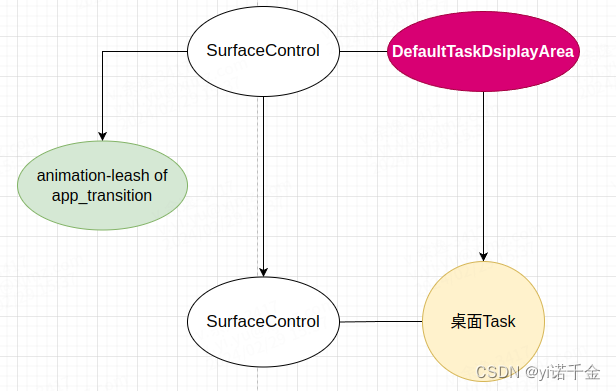
此时leash逐渐发现不对劲,但是假装不知道
假如我们后面不执行移除leash图层的操作,那么这个图层一直会保持这个状态挂在DefaultTaskDsiplayArea上和桌面Task共享父亲。 -
移除动画图层
t.remove(leash);/*** Equivalent to reparent with a null parent, in that it removes* the SurfaceControl from the scene, but it also releases* the local resources (by calling {@link SurfaceControl#release})* after this method returns, {@link SurfaceControl#isValid} will return* false for the argument.** @param sc The surface to remove and release.* @return This transaction* @hide*/@NonNullpublic Transaction remove(@NonNull SurfaceControl sc) {reparent(sc, null);sc.release();return this;}同样调用了
reparent方法,先把需要remove的图层的父图层置空,然后释放。
过程如下所示:
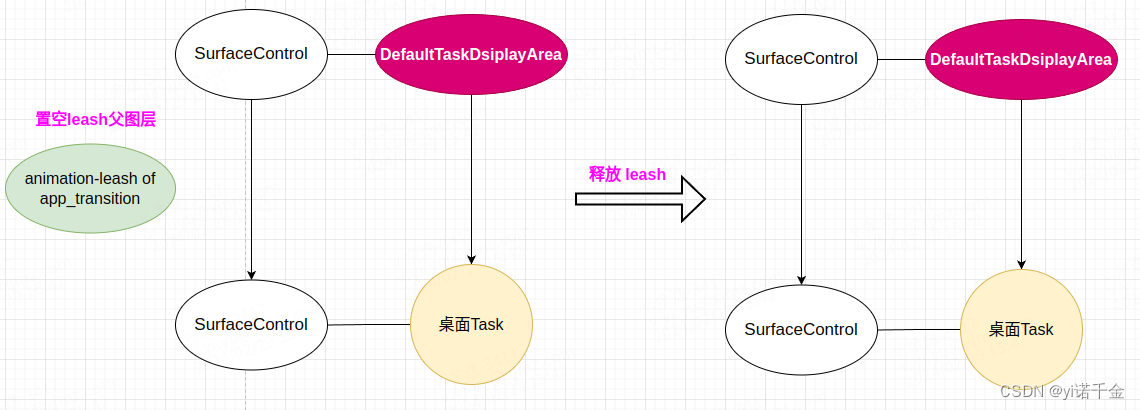
leash:原来我才是多余的那个,悠悠苍天,何薄于我! -
移除和leash相关联的窗口和surface并调整surface
animatable.onAnimationLeashLost(t);
代码路径:frameworks/base/services/core/java/com/android/server/wm/WindowContainer.java@Overridepublic void onAnimationLeashLost(Transaction t) {mLastLayer = -1;//调用mWmService中的mSurfaceAnimationRunner对象的onAnimationLeashLost方法//用于移除和leash相关联的窗口,这个只在前面requiresEdgeExtension为true时逻辑中有涉及mWmService.mSurfaceAnimationRunner.onAnimationLeashLost(mAnimationLeash, t);//mAnimationLeash置为空mAnimationLeash = null;mNeedsZBoost = false;//调整其所有child的z-orderreassignLayer(t);//更新Surface位置updateSurfacePosition(t);}其中
mWmService.mSurfaceAnimationRunner.onAnimationLeashLost(mAnimationLeash, t);的mAnimationLeash前面说过就是动画图层。这个只在前面SurfaceAnimationRunner的startAnimation方法中requiresEdgeExtension为true时逻辑中有涉及,其为true时才会操作mEdgeExtensions这个ArrayList,这里不讨论。
协调动画显示
在SurfaceAnimator.reset()方法最后调用了mService.scheduleAnimationLocked();
代码路径:frameworks/base/services/core/java/com/android/server/wm/WindowManagerService.java
void scheduleAnimationLocked() {mAnimator.scheduleAnimation();}void scheduleAnimation() {if (!mAnimationFrameCallbackScheduled) {//mAnimationFrameCallbackScheduled 设置为 true,表示动画帧回调已经安排mAnimationFrameCallbackScheduled = true;//每一帧被绘制时,回调mAnimationFrameCallbackmChoreographer.postFrameCallback(mAnimationFrameCallback);}}
这个方法的主要作用是确保动画帧回调被正确地安排,以便在每一帧绘制时执行,可以确保动画在每一帧都被调用,从而平滑地更新和显示动画。
处理和响应动画完成的逻辑
回到SurfaceAnimator.getFinishedCallback中匿名的onAnimationFinished方法中有调用staticAnimationFinishedCallback.onAnimationFinished(type, anim);处理和响应动画完成的逻辑。
这里的staticAnimationFinishedCallback也是在SurfaceAnimator构造方法中初始化的
SurfaceAnimator(Animatable animatable,@Nullable OnAnimationFinishedCallback staticAnimationFinishedCallback,WindowManagerService service) {mAnimatable = animatable;mService = service;mStaticAnimationFinishedCallback = staticAnimationFinishedCallback;mInnerAnimationFinishedCallback = getFinishedCallback(staticAnimationFinishedCallback);}
在WindowContainer构造方法中初始化mSurfaceAnimator = new SurfaceAnimator(this, this::onAnimationFinished, wms);,因此staticAnimationFinishedCallback.onAnimationFinished对应的就是WindowContainer.onAnimationFinished方法
代码路径:frameworks/base/services/core/java/com/android/server/wm/WindowContainer.java
/*** Called when an animation has finished running.*/protected void onAnimationFinished(@AnimationType int type, AnimationAdapter anim) {//主要用于 清空 mSurfaceAnimationSources 列表doAnimationFinished(type, anim);//WindowManagerService中实现onAnimationFinished()//用于唤醒所有等待mGlobalLock对象的线程,确保多个线程能够正确地执行任务mWmService.onAnimationFinished();//将 mNeedsZBoost 设置为 false,表示不再需要Z轴增强mNeedsZBoost = false;}
这个里面又调用了另一个doAnimationFinished(type, anim);
private void doAnimationFinished(@AnimationType int type, AnimationAdapter anim) {for (int i = 0; i < mSurfaceAnimationSources.size(); ++i) {//mSurfaceAnimationSources中每个容器,做对应的onAnimationFinishedmSurfaceAnimationSources.valueAt(i).onAnimationFinished(type, anim);}//清除动画源列表mSurfaceAnimationSources.clear();if (mDisplayContent != null) {//调用DisplayContent的onWindowAnimationFinished方法//从当前源码上看,主要是针对输入法相关做了一些操作mDisplayContent.onWindowAnimationFinished(this, type);}}WindowContainer.cancelAnimation方法中调用的doAnimationFinished也是这个方法。
我们这里mSurfaceAnimationSources是保存的是需要做动画的ActivityRecord,即桌面ActivityRecord和启动应用的ActivityRecord。
mSurfaceAnimationSources的值是在前面系统侧动画启动流程中WindowContainer.applyAnimationUnchecked方法中添加的。
mSurfaceAnimationSources.valueAt(i).onAnimationFinished(type, anim);调用了不同容器onAnimationFinished方法,在ActivityRecord和WindowState中都重写了这个方法。我们这里是远程动画,主要调用的就是ActivityRecord中重写的onAnimationFinished方法。
代码路径:frameworks/base/services/core/java/com/android/server/wm/ActivityRecord.java
@Overrideprotected void onAnimationFinished(@AnimationType int type, AnimationAdapter anim) {super.onAnimationFinished(type, anim);Trace.traceBegin(TRACE_TAG_WINDOW_MANAGER, "AR#onAnimationFinished");//更新标志位mTransit = TRANSIT_OLD_UNSET;mTransitFlags = 0;//更新应用的布局变化setAppLayoutChanges(FINISH_LAYOUT_REDO_ANIM | FINISH_LAYOUT_REDO_WALLPAPER,"ActivityRecord");//清除缩略图clearThumbnail();//更新应用的可见性状态setClientVisible(isVisible() || mVisibleRequested);getDisplayContent().computeImeTargetIfNeeded(this);ProtoLog.v(WM_DEBUG_ANIM, "Animation done in %s"+ ": reportedVisible=%b okToDisplay=%b okToAnimate=%b startingDisplayed=%b",this, reportedVisible, okToDisplay(), okToAnimate(),isStartingWindowDisplayed());// clean up thumbnail windowif (mThumbnail != null) {mThumbnail.destroy();mThumbnail = null;}// WindowState.onExitAnimationDone might modify the children list, so make a copy and then// traverse the copy.//通知子窗口动画结束final ArrayList<WindowState> children = new ArrayList<>(mChildren);children.forEach(WindowState::onExitAnimationDone);// The starting window could transfer to another activity after app transition started, in// that case the latest top activity might not receive exit animation done callback if the// starting window didn't applied exit animation success. Notify animation finish to the// starting window if needed.//通知启动窗口动画结束if (task != null && startingMoved) {final WindowState transferredStarting = task.getWindow(w ->w.mAttrs.type == TYPE_APPLICATION_STARTING);if (transferredStarting != null && transferredStarting.mAnimatingExit&& !transferredStarting.isSelfAnimating(0 /* flags */,ANIMATION_TYPE_WINDOW_ANIMATION)) {transferredStarting.onExitAnimationDone();}}//通知应用过渡动画结束getDisplayContent().mAppTransition.notifyAppTransitionFinishedLocked(token);//协调动画显示scheduleAnimation();// Schedule to handle the stopping and finishing activities which the animation is done// because the activities which were animating have not been stopped yet.// 如果需要,调度处理停止和结束活动的任务。这是必要的,因为正在动画的活动可能还没有被停止。mTaskSupervisor.scheduleProcessStoppingAndFinishingActivitiesIfNeeded();Trace.traceEnd(TRACE_TAG_WINDOW_MANAGER);}
协调动画显示
和前面在SurfaceAnimator.reset()方法最后调用了mService.scheduleAnimationLocked();相似,
这里我们调用的scheduleAnimation();
代码路径:frameworks/base/services/core/java/com/android/server/wm/WindowContainer.java
/*** Trigger a call to prepareSurfaces from the animation thread, such that pending transactions* will be applied.*/void scheduleAnimation() {mWmService.scheduleAnimationLocked();}
代码路径:frameworks/base/services/core/java/com/android/server/wm/WindowManagerService.java
void scheduleAnimationLocked() {mAnimator.scheduleAnimation();}最终调用到了WindowAnimator.scheduleAnimation()
代码路径:frameworks/base/services/core/java/com/android/server/wm/WindowAnimator.java
void scheduleAnimation() {if (!mAnimationFrameCallbackScheduled) {//mAnimationFrameCallbackScheduled 设置为 true,表示动画帧回调已经安排mAnimationFrameCallbackScheduled = true;//每一帧被绘制时,回调mAnimationFrameCallbackmChoreographer.postFrameCallback(mAnimationFrameCallback);}}
这个方法的主要作用是确保动画帧回调被正确地安排,以便在每一帧绘制时执行,可以确保动画在每一帧都被调用,从而平滑地更新和显示动画。
